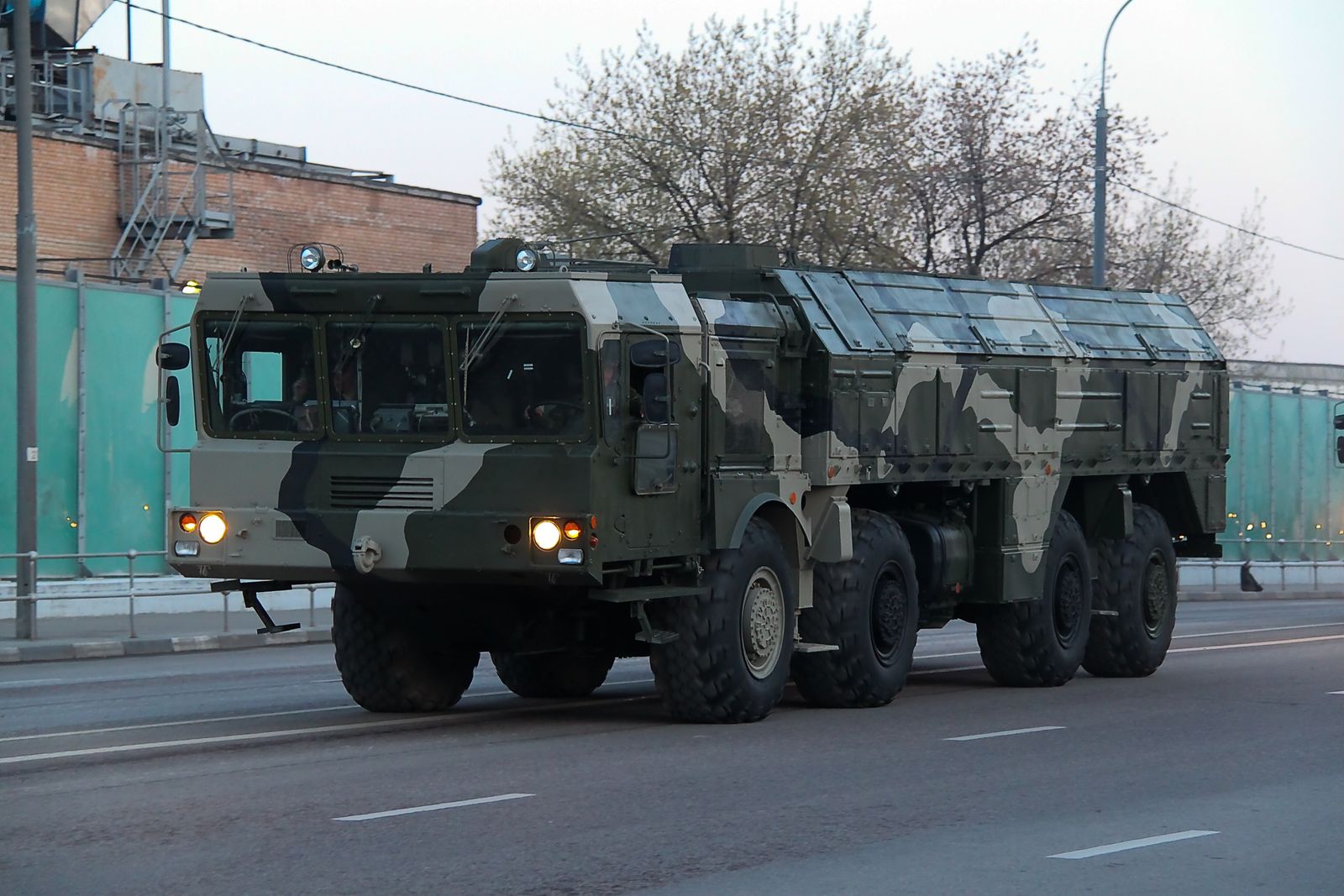The Pentagon will use new exotic weapons to deter Russia and China
We live in the time when international peace and security are threatened by increasingly complex issues. In Asia-Pacific, rising China is bullying our allies and challenging post-war world order. In the Middle East, ISIS and shia-sunni rivalry has destabilized an entire region and resulted in unprecedented security threats. And even in Europe, peace is undermined by the war in Ukraine and aggressive actions of revisionist Russia.
Currently, NATO’s military and technological superiority guarantees security of its members. However, our geopolitical adversaries are actively working to erode NATO’s advantage. As we speak, Russia and China are massively upgrading their military hardware. On top of that, there are worrisome indications that the Russians and the Chinese are heavily investing in robotics, autonomous weapons systems, and robotized warfare. How should NATO respond to this challenge? What should NATO do to maintain its deterrent capabilities in the twenty first century?
So far, NATO has been successful at deterring any major attack on its members by employing two main strategies called ‘offsets.’ The first ‘offset’ strategy was invented at the dawn of the Cold War. It relied on NATO’s substantial advantage in nuclear arsenal in order to counter Soviet advantage in conventional weapons. Then, in the late 1970 the Soviets were able to close the gap in nuclear weapons and NATO had to develop a new strategy called the ‘second offset.’ The second ‘offset’ is still employed today and it is based on superiority of precision-guided weapons, stealth technology, and space communications. However, according to US DoD officials, Russian and Chinese military modernization is beginning to erode advantages of the second ‘offset’ at an accelerating pace. Pentagon officials believe that in order to maintain its deterrent NATO needs to shift into a new third ‘offset’ strategy. The idea of the third ‘offset’ presumes that smart, robotic, and autonomous weapons systems will restore NATO’s technological advantage and deterrent capabilities.
In its recent statement, the Pentagon declared its intention to develop new futuristic weapons systems that will contain increasingly aggressive Russia and China for decades to come. The US Defense Secretary Ashton Carter said that the Pentagon 2017 budget requested $71.4 billion for research and development. The research is mainly focused on robotics, precision weapons, miniaturized railguns, autonomous vehicles, and swarm boats. It also includes groundbreaking research in hypersonic autonomous aircraft, cyber war, new sub-sea capabilities, and exoskeletons which would take warfare to a completely new level.
Smarter Smart Bombs
The Pentagon is pursuing advanced navigation projects using micro cameras to improve munition targeting capabilities. This project should make our smart bombs even smarter. The program is developing a lightweight off-line targeting module that could fit many types of ammunition. Also, the project is using commercial components which should considerably reduce overall costs of new munitions.
Arsenal Plane
These smarter payloads are designed as a part of the ‘arsenal plane’ project. The ‘arsenal plane’ also known as the ‘flying launch pad’ will carry a large volume of smarter smart bombs and missiles. It will be networked with a group of fifth- generation aircraft that will act as its forward sensors and defense. The next-generation stealth aircraft will penetrate through the enemy lines and eliminate enemy radar and air-defenses capabilities, while ‘arsenal planes’ will follow and finish the job. In Carter’s words, ‘arsenal aircraft’ will combine different systems already in our inventory to create wholly new capabilities.
Miniaturized Railguns
The Pentagon is also developing smaller railguns that can fit on every Navy destroyer and even Army Paladin self-propelled howitzers. For instance, the latest Zumwalt destroyers will be equipped with railguns designed for defense and attacking land-based targets. The projectiles have so much kinetic energy that they don’t need any explosive charges and thus cost only fraction of conventional missiles. Meanwhile, the U.S. is equipping self-propelled M109 Paladins with next-generation weapons. The Pentagon has already test-fired hyper-velocity projectiles from a M109 Paladin platform that is designed to serve as ballistic missile defense. The new railgun-based missile defense has significantly greater range, speed, and precision. It is also expected to be much cheaper and more agile than existing capabilities.
Micro-Drones
Other projects are working on autonomous vehicles and micro-drones. The US Department of Defense is developing and testing advanced airborne micro-drones that can attack enemy targets in swarms. They can be thrown by a soldier or kicked out of a fighter jet while moving at Mach 0.9 speed. These micro-drones are built with 3D printing technologies, commercially available components, and even applications used in the Mars lander.
Swarm-Boats
The Pentagon has also unveiled that it is working on autonomous swarm-boats. These naval drones will network together in all sorts of missions from fleet defense to close in surveillance. This will give the US improved capabilities in defense and surveillance without even putting its soldiers at risk. The US Navy is testing prototype swarm-boats that can autonomously escort warships, tirelessly patrol coastal areas, and even destroy enemy ships.
Artificial Intelligence
Among other projects, the US DoD is also focused on robotic and artificial intelligence research which could completely change the essence of war. The 2017 budget includes $15 billion for development of AI and deep-learning machines. The Pentagon is working to harness the power of artificial intelligence and using human-machine teams in order to create a military force enhanced with superpowers. The new AI technologies will be integrated with wearable electronics, drones, mother ships, and exoskeletons.
Unmanned Submarines
At the same time, the Pentagon is not neglecting undersea and cyber capabilities. For instance, the US is planning to invest $40 billion in undersea capabilities in the next five years. The Department of Defense is creating unmanned underwater vehicles. These stealthy unmanned submarines will able to sit quietly in the ocean for years without being noticed. They can discover and destroy enemy submarines, mines, and military infrastructure while spending a fraction of time and cost of conventional manned submarines. According to Carter, this will give the US the most lethal undersea and anti-submarine force in the world.
Cyber Warfare
Meanwhile, the Pentagon is taking steps to respond to the Russian and Chinese cyber threat. $35 billion will be invested in developing cyber infrastructure and offensive cyber capabilities. The cyberwarfare program includes offensive operations against adversaries and defense of space infrastructure.
As our competitors are working to reduce our advantage, NATO must accelerate technological innovation and investment. These revolutionary projects could be the only way to maintain global balance of power and nullify major advances in Russian and Chinese capabilities in the future. And while the Pentagon is working on all these new projects, it is very important that Canada plays its role in the development of future technologies. Joining these efforts will give our forces access to new technologies and improve Canada’s standing in the alliance. Also, Canadian high tech sector would receive a boost from new opportunities and long term contracts with our partners and allies.




